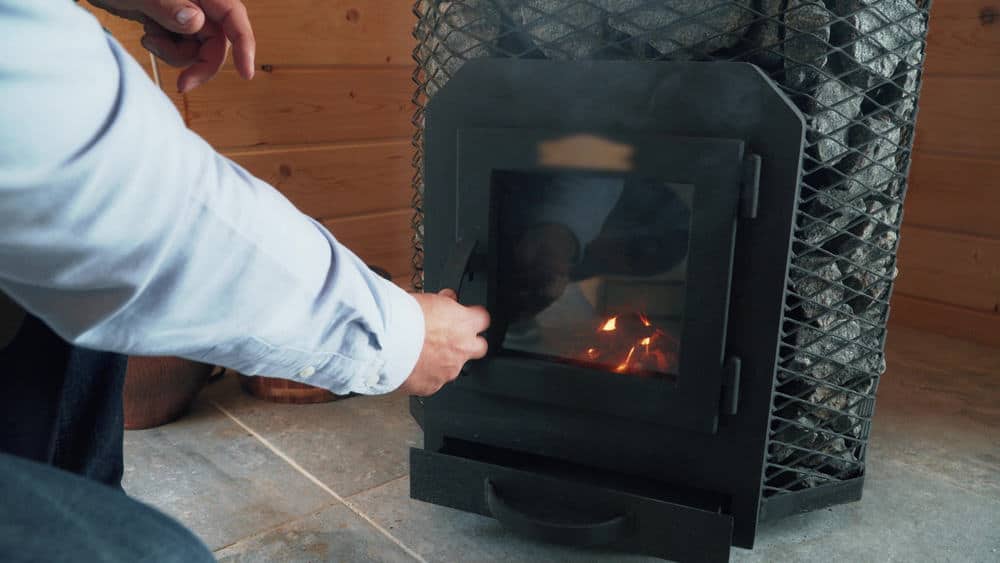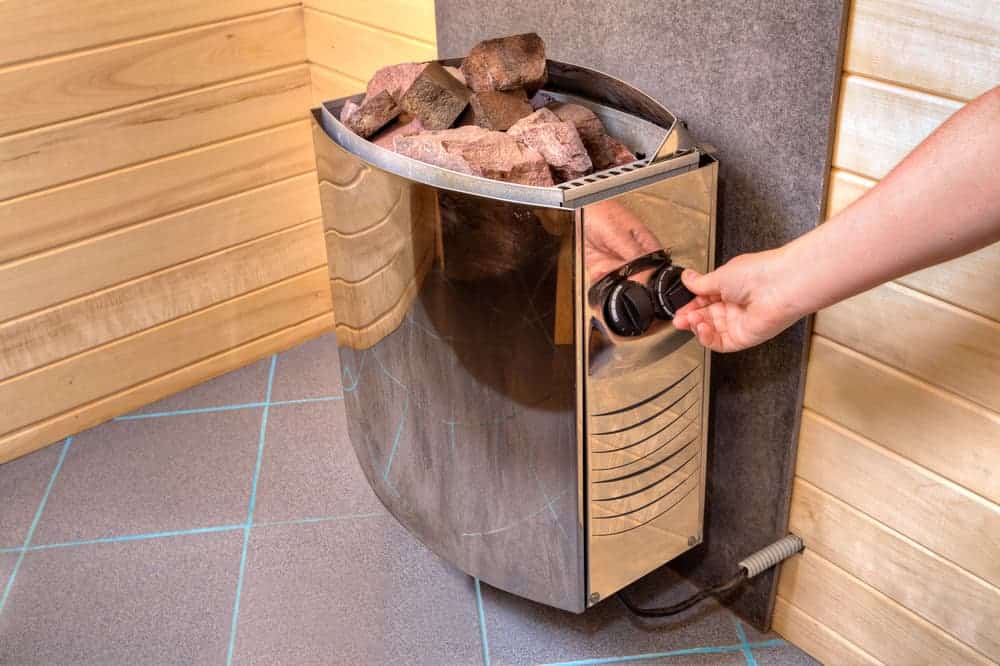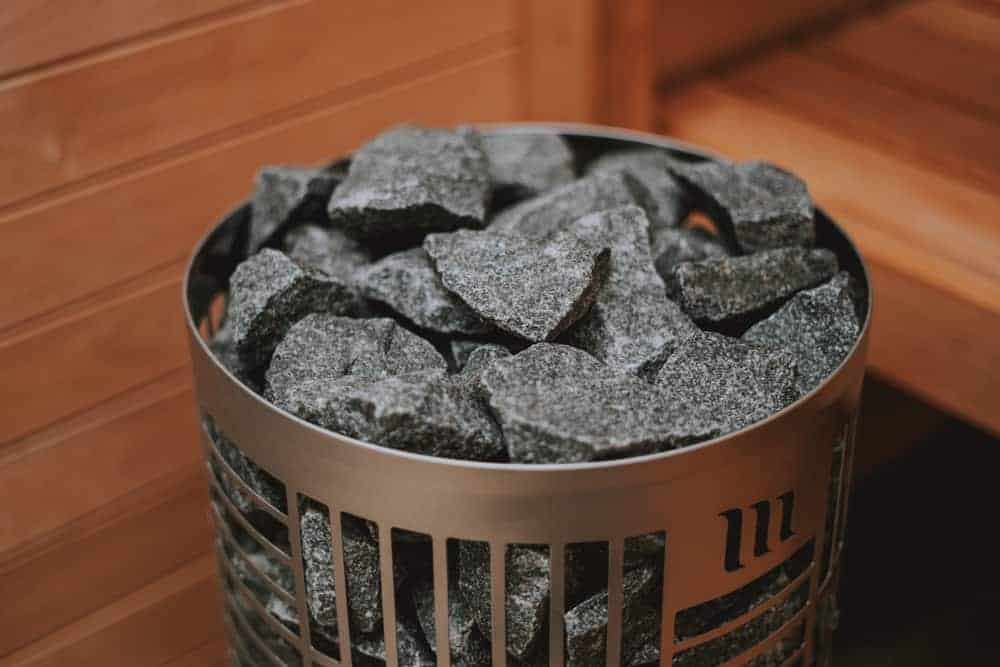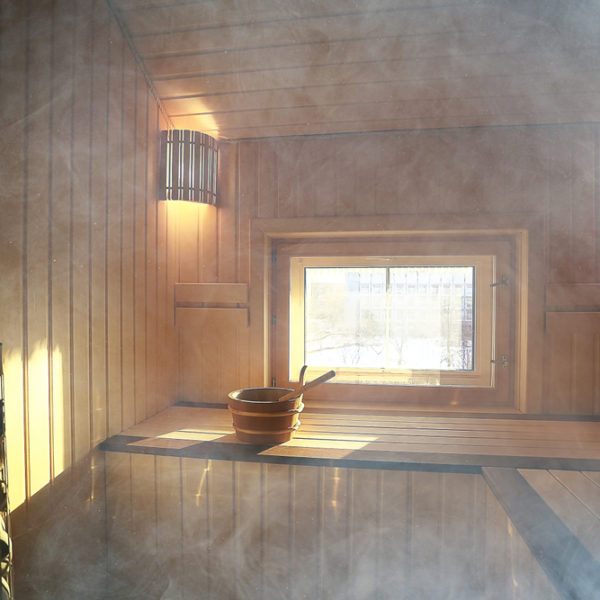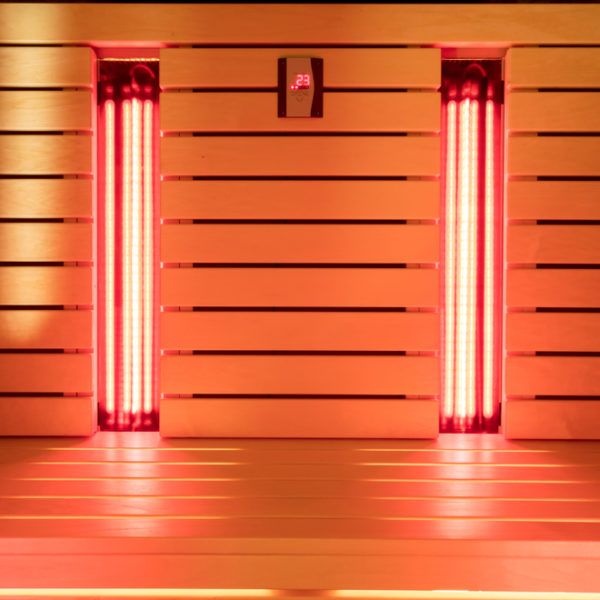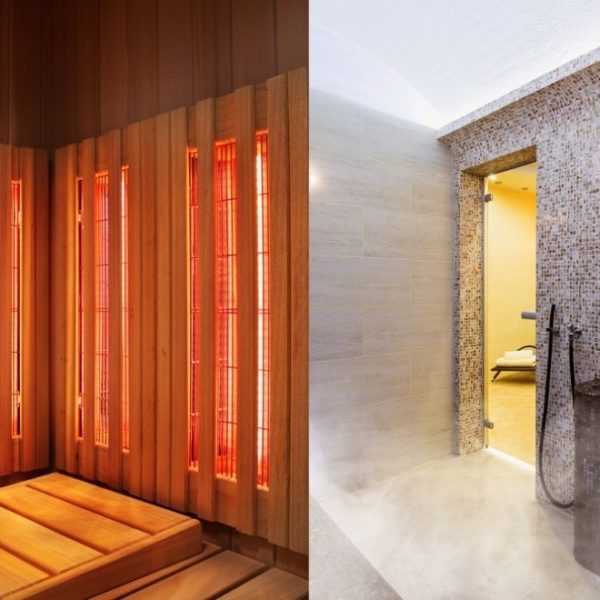Do you want to know the most efficient way to heat your at-home sauna? Then, let’s talk sauna heaters. Likely, you have heard of various heater types but do not know which will suit you the most. Please read on if you want to understand the difference between the four main heating methods and their associated costs.
Sauna Heater: Modernization of Sauna Heating
Sauna heating in its most rudimentary form was not an overly complicated process yet is significantly more labor-intensive than modern heating methods.
Feel free to research the fascinating history of the Finnish savusauna, or smoke sauna, that continues to embrace a natural ambiance down to the scent of the wood proliferating off hot embers of locally harvested timber, perfect for off-grid locations.
Over 2000 years, heating technology for saunas has undergone several advancements to accommodate more modern living preferences, enhance efficiency, and even meet scientifically-backed medical therapy practices.
The industrialization of the New World and Europe propelled electricity, gas, and infrared to become more efficient and readily accessible heat sources for saunas worldwide, but wood options remain a popular choice.
How to Choose a Sauna Heater?
I am happy that you prioritize your health and wellness so much that you have decided to go ahead with installing a sauna at your home. The physiological benefits extend well beyond relaxation. That is for sure!
But now it’s time for another big decision- what kind of heater will best suit your individual needs? Again, it is essential to understand that your finished design may be affected by the type of heater you select to fit your ideal setup.
Before we start talking specifics, I urge you to mull over the following sets of questions:
- #1: What type of sauna have you experienced? If you have used various saunas, is there one that you prefer? Do you have a specific condition that a particular sauna helps treat or manage?
- #2: Where do you plan to install or build your sauna? Will it have a dedicated room, be self-contained in a prefabricated enclosure, or would you rather it be outside?
- #3: Is this a personal indulgence, or do you foresee your family wanting to experience the sauna as well? Will you use it with friends when invited to your house?
- #4: Do chromotherapy lights or an updated entertainment center sound interesting? Are you attracted to the additional features, or is a more basic setup suitable?
- #5: Can you readily find a local contractor who has experience installing various types of saunas? Is a DIY install possible? Is it relatively easy to find replacement parts and an authorized technician to perform replacements if a component fails? Does your sauna need to be shipped from overseas?
- #6: How do I clean and regularly maintain my sauna so that it can reach if not exceed its warrantied lifespan?
Now that you have brainstormed some actionable responses, it is time to find out what heater is most suitable for you.
Types of Sauna Heater
Saunas have become synonymous with Finnish culture; they boast a 3:5 ratio between reported saunas and the countries population. I can’t think of a better way to bring a family or group of friends together than a sauna- a neutrally yet therapeutic environment that exudes relaxation.
Although at least 25,000 savusaunas still operate in Finland alone, this once popular tradition is experiencing a revival worldwide. Including other state-of-the-art initiatives, Finland is known for its deep love for the sauna at all socio-economic levels.
That said, contemporary design and accessibility have propelled the industry to four main heating modes for your sauna:
Wood-burning Sauna Heater
Wood-burning heaters allow you to experience the natural ambiance of what was so surreal about the original sauna escapade. And for many, the adventure and slow-paced art of gathering firewood associated with fueling a fire is an escape from life, the office, and other stressors.
And if we know anything, your stress levels are significantly reduced as you sweat the toxicity out from your pores. For any of you involved in a sport or other fitness routine, you have probably felt a similar release after a tough competition or strenuous workout.
Gas Sauna Heater
Think of a resort, large-scale wellness spa, or therapy clinic where the sauna is running for hours on end every day to accommodate frequent visitors and customers.
Although gas heating would not be best suited for a smaller in-home enclosure, the above scenarios may benefit from a commercial use heating profile.
Honestly, a gas unit would be impractical as a home solution, as its total operation time directly affects its efficiency. Unless your home already has supplied gas, casual use won’t make such a significant investment worth the bill.
Before consulting with a heater expert, make sure you have correctly measured out the space you need to heat. This step will be vital to determine the suitable heater for the size of the given area.
Electric Sauna Heater
This alternative usually lacks the use of a traditional sauna pail and steam ladle. However, you can still add water to the rocks in an electric sauna for a more steamy experience.
Typically speaking, we know that electricity and water do not mix, but electric sauna heaters seem to be an exception to the rule.
Electric saunas were developed in the 1950s and quickly gained popularity in the United States as this relaxed chamber suddenly became much more accessible to the community at large.
Electric heaters provide a modern touch of elegance to your sauna, but they can also control preferred temperature settings efficiently. In addition, electrical sauna heaters are easily installed and do not require the use of a chimney, as do wood-burning saunas.
Infrared Sauna Heater
Infrared saunas are the newest craze in sauna technology. Thanks to a new and improved lamp design patented in 1960s Japan, this unique heat therapy has progressed into a viable alternative for healing and treatment.
Since infrared heat directly penetrates our skin, your sessions can be significantly longer due to their ability to generate sweat at a lower temperature.
Furthermore, infrared operates by penetrating our skin tissue down to its cellular level. It targets the powerhouse of our cells, otherwise known as the mitochondria.
Our mitochondria store ATP, serving as the energy carriers to fuel energy-consuming activities. This finding was a pivotal component to NASA’s study concluding infrareds ability to promote healing in its astronaut patients.
Infrared heat is fascinating, and I could easily spend multiple articles discussing it. However, to be short, it belongs to the electromagnetic spectrum, which captures the various rays emitted from our mother Sun.
Furthermore, infrared is not visible to the human eye, so we absorb it as heat, commonly referred to as radiant heat.
Industry research divides the infrared spectrum into three ranges that significantly influence topical skin conditions to even more profound and more concentrated medical problems.
The wavelengths of infrared rays lie between 700 and 100,000 nanometers- quite an expansive range. The earliest infrared saunas used far-infrared, which is typically between 3000 and 100,000 nanometers. Although still beneficial, the penetrating factor is decreased to approximately 0.1 mm beneath the skin and is best suited for topical therapies.
As studies and research developed through the years, scientists revealed that near-infrared, ranging between 700 and 1,400 nanometers, delivers far-deeper penetrating benefits to the human body.
Suppose you choose to equip your sauna with an infrared heater. In that case, most manufacturers offer full-spectrum benefits and an adaptable control surface to regulate various wavelengths of infrared heat depending on your therapy situation.
Sauna Heater Cost
Now that I have given you some general background and typical uses for the various types of sauna heaters available, it’s time to get down to the nitty-gritty.
Wood-burning Sauna Heater
Wood-burning heaters are a favorite in the European sauna community, although they are also famed for outstanding electric and gas sauna heater technology.
There is a nostalgia that one can only experience with a proper wood-heating sauna heater. From the crackling of the fire to the sweet aroma of burning softwood, wood will undoubtedly give you a complete experience, beginning from its collection and gathering.
Wood-burning heaters are traditionally floor-mounted, but they will require a chimney to ventilate the smoke adequately. You will benefit from a professional installation so that your sauna will receive proper oxygen levels to eliminate smoke inhalation dangers.
A top-of-the-line Finnleo or Harvia wood-burning stove may start at $500 for in-home solutions and soar well above $7000 for a commercially-graded sauna.
The recurring cost you will face with a wood-burning heater boils down to the type of wood you supply and the saunas regular cleaning and maintenance habits.
Arborists classify trees as either hardwood or softwood. Hardwoods burn longer and hotter than softwoods in general. You will have to consider what is readily available and locally harvested in your area.
Firewood collection is an excellent form of exercise and a fantastic way to gather your family for some much-needed outside time. If you plan on purchasing firewood, expect to pay between $4-$10 per bundle.
You can experiment with different kinds of wood until you find one that you prefer. Lastly, if you choose a wood-burning heater, make sure that you corner off an area that you can easily store your firewood.
Gas Sauna Heater
Gas-operated sauna heaters are the least purchased type in today’s sauna market. Like a typical burner with which you may be more familiar, the gas should feed through dedicated built-in piping or gas tank.
The gas burner then heats a metal plate on which you stack the sauna stones. As the rocks heat up, the generated heat transfers to the surrounding room. Adding water to the heated stones will create steam, which raises the room’s humidity level.
Natural gas is the cleanest and cheapest option; however, you will have to inform yourself of what is readily available in your area. In addition, despite being environmentally friendly, gas has a reputation for high volatility, so you will need a certified technician to install and pipe your heater professionally.
The size of your heater is directly related to the size of your sauna space, so it would be helpful if you took an accurate measurement of the area (length multiplied by width multiplied by height) of your intended sauna before speaking to a heater consultant.
Generally, the gas heater chosen needs to provide approximately 2,500 BTUs for every cubic meter of sauna space.
Let’s do some math with a sauna space that measures 1.8 meters in length by 1.8 meters in width by 2.1 meters high (imperial units: 6 feet wide by 6 feet long by 7 feet high):
TIP: To find the area, multiply L*W*H, so:
1.8m*1.8m*2.1m=6.8 cubic meters
6.8 cubic meters*2,500 BTUs= 17,000
With these dimensions, which can easily accommodate a family of four, you should expect to pay $3150 for a unit that can handle up to 40,000 BTUs of gas power.
Begin your search with the all-stainless steel, state-of-the-art gas sauna heater made by world-renown Scandia Manufacturing.
Electric Sauna Heater
Electric heaters are slightly less responsive to temperature changes than gas or infrared heaters. However, there is no need to fret as this won’t cause any noticeable fluctuations in your overall experience.
Choosing the appropriate electric sauna heater can be a little tricky. It reminds me of “Goldilocks and The Three Little Bears.” If the heater is too small, then it is unable to produce sufficient heating for your space. But, if it’s too large, you will have trouble regulating your saunas temperature and humidity levels. So it needs to be just right.
The industry records the power of an electric sauna heater in kW, or kilowatts. So for every cubic meter of space, you should plan on 1kW of heating power.
Let’s do the math again with the standard sauna dimensions we used earlier:
TIP: To find the area, multiply L*W*H, so
1.8m*1.8m*2.1m= 6.8 cubic meters
6.8 cubic meters*1 kW= 6.8 kW
NOTE: For exterior sauna installations in cold weather, “it’s a good idea to allow for 1kW of extra power.”
For the above scenario, you should look for an electric sauna heater capable of handling roughly 8kW of electric power. I recommend that you go for the Harvia KIP-8kW to control the heat in your standard-size electric sauna.
This traditional wall-mounted sauna heater is a market favorite in Finland, the land where it all began, so this company boasts years of customer trust and confidence.
You can purchase this unit for as low as $750, but I suggest you shop around various retailers for the best pricing available.
I found this fantastic online calculator that you can use here to get an idea of how much your utility bill will increase based upon heater size and average monthly sauna use.
Infrared Sauna Heater
In contrast with convection, with infrared technology, radiant heat directly penetrates your body within the sauna. And for this reason, infrared heaters forfeit the need for both steam and rocks, which undoubtedly attribute to the nostalgia of a traditional sauna.
In essence, infrared saunas emit infrared radiation from specialized heating panels. Due to infrared’s ability to deeply penetrate the human body, maximum heat does not exceed 140 degrees Fahrenheit, much lower than other sauna heaters.
The infrared heater market uses two types of material in their heating panels: carbon fiber and ceramic. While you should conduct your research to understand the benefits and drawbacks of each material, both are sure to provide you with an unforgettable sauna experience.
In addition, you will need to consider the positioning of your infrared heating panels, as infrared travels in straight lines. For well-rounded heat, you can install heaters in the front, back, sides, and even underfoot for optimal radiant efficiency.
You will need to consult with a professional to help decide upon how many heating panels to use when outfitting your sauna, but here are some excellent links to begin your price comparisons.
You can purchase each heating panel on its own, or they may come already preset in a wooden frame. In addition, expect prices to vary dramatically based upon wattage ranges.
Typically, each infrared heating panel will run between $200-$600.
FAQs
1) Where can I find a reputable dealer for purchasing a home sauna?
The North American Society is a fantastic place to start.
2) What are the expected costs of running a sauna?
The running costs of your sauna will depend upon the type of heater you select. Infrared heating is the most efficient method, while electric heating closely follows.
For example, if you utilize an 8kW electric heater to power 12 monthly 30-minute sessions, your average utility bill will increase by $120.
As we already discussed, gas heaters will not be a financially sound investment unless in a more extensive setup. And, wood-burning stoves will cost the most/per session if you are purchasing your firewood vice harvesting your own if you have the land to do so.
3) Will placing a sauna in my home increase my property value?
As with any addition to your property, the amount of potential added value depends on buyer preferences. If you are relocating and have grown attached to your sauna, you may even consider dissembling your unit and bringing it in tow.
4) How long does it take to build a sauna?
Today’s sauna market offers prefabricated saunas that you can assemble in a matter of hours. You also have the option of buying a sauna package in which the materials come pre-cut to your specified dimensions.
Alternatively, you can opt to build your sauna entirely from scratch. The length of time to make a sauna can easily stretch to over twenty hours of labor, depending on the size of your sauna and your level of expertise and DIY prowess.

